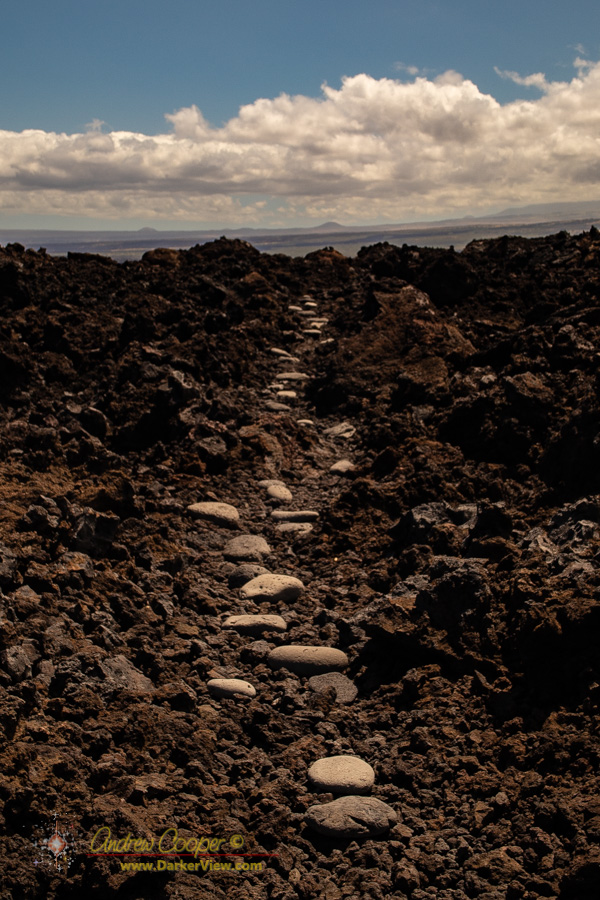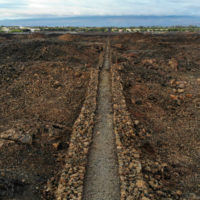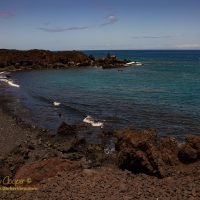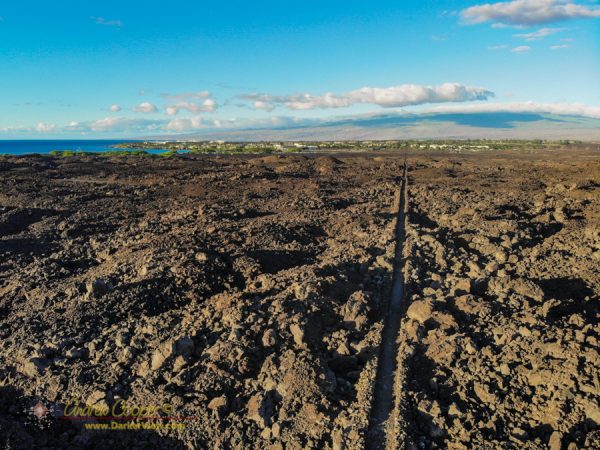
Tag: trail
The King’s Loop
The region south of Waikoloa along the shore seems to be a barren field of lava with little to offer beyond miles of dark rock and baking sun. That may seem to be the case, but there are surprising gems out in those lava fields.
The plan? As usual hike the King’s Trail south from Waikoloa, but this time explore some of the smaller trails I had passed by in the past. Perusing the satellite imagery reveals a surprising number of trails through the lava. Considering the substantial effort it takes to cut a trail through the worst aʻa lava those trails must be significant somehow.
Continue reading “The King’s Loop”Coastal Trail
Walking the King’s Trail
Rather than spend the evening obsessing over election results I opted to take a hike. Nothing dramatic, just a short loop hike close to home, along the shoreline south of ʻAnaehoʻomalu Bay .
The plan was to use the King’s Trail to quickly hike a couple miles out, then to take my time hiking back along the shoreline. I timed my start so that sunset would occur while I was coming back along the beach.
While this section of the King’s Trail is over 150 years old, it is in excellent condition and allows easy hiking across the lava fields. The trail cuts absolutely straight over the ridges and tumuli of piled rock, much faster than slogging through the beach sand.
I had hiked the shoreline here many times, but had not hiked any real length of the King’s Trail. The trail crosses the lava flows well above the coastline, as a result it can be brutally hot under a tropical Sun, while the shoreline offers regular shade and a cool ocean breeze.
This particular election day evening the Sun was muted by a broken overcast sky. Why not use the trail?
Continue reading “Walking the King’s Trail”ʻŌhiʻa Forest
While the beaches may be closed during the pandemic, most of the trails are open. Deb and I did a little walking on the Puʻu Oʻo Trail while coming back over the hill from Hilo.
Nothing unusual to report, no rare native birds. As the ʻōhiʻa are not in bloom few birds were in evidence. Even without blooms or birds this is always a pretty trail, a rugged landscape over recent lava flows and the pioneer plants found on these flows.
Coastal Trail
South of Kiholo
The South Kohala Coast offers some of the most luxurious resorts on the world. Large resorts, beach parks, houses, and a small port occupy much of the coastline. Despite all of this there are still wild stretches of coastline to explore. Places with no development, where you can hike alone for a couple hours.
One of these undeveloped stretches runs several miles from the State Park at Kiholo Bay south to the resort area centered around the Hualalai Four Seasons, the most exclusive resort on the coastline.
A few friends and co-workers were camping out at Kiholo Bay over the weekend. An open invitation had also been sent out to our group for a hike south of the bay along the coastline. For once my weekend was not already committed and I decided to take the short drive down to Kiholo to join in.
Continue reading “South of Kiholo”King’s Trail
Hiking the Sealion Cove Trail
The Sealion Cove trail is a beautiful hike over remote Kruzof island north of Sitka, Alaska. The only way to access the trailhead is by boat or seaplane. The trail starts on Kalinin Bay, passes through a small pass between two mountains and then drops down to the Pacific Ocean and the beautiful beach at Sealion Cove. At the midway point, in the pass, is a small and apparently unnamed lake.
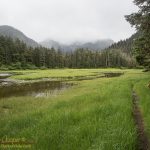
The first section of the trail follows the shore of the wide estuary that drains into Kalinin bay. The trail follows the treeline where the high tides and saltwater prevent the spruce from encroaching further. While there has been some effort to improve the trail here, with gravel spread and rock strategically placed at the many small streams, the effort looks to be futile. Deep mud pockets sucked at our feet and required careful footing. The dry socks in my pocket were obviously going to stay in my pocket, my river sandals often full of mud.
Trail Through the Lava
A well made trail across the 1856 lava flow, allowing an easy crossing through the aʻa. Too well made, not something built by the State of Hawaii, this is older, much older. One feature of the old trails was large flat stones laid along the path. I suspect the trail was cut soon after the lava flow cooled, reconnecting the villages along this section of the Kohala coast.


